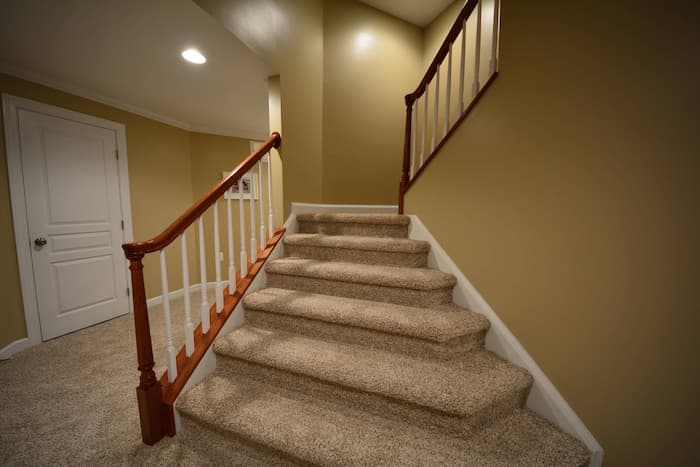How to Add Height to Your Basement
The term “ceiling height” refers to the height between the ground and the ceiling or, in the presence of a roof beam, the bottom of the beam. Get to experience one of the best basement digging companies in Toronto and explore basement underpinning question with us further.
Why Raise My Basement Ceiling Height?
In older residences that weren’t necessarily constructed with the goal of eventually getting the basement completed, very low ceiling basement height is a prevalent problem. More often than not, individuals choose to raise height for the purpose of abiding by the legalities.
The average ceiling height requirement for a finished basement structure is 6’8″. The ceiling must be increased before the space is finished when it’s lower than this basic threshold, which is usually the case for older houses.
You can still renovate the basement even if it has lower ceilings. To come up with a style that is most suited for your particular area, you might only require being a bit inventive. Consider the level of the ceiling in each room when you plan the usable basement.
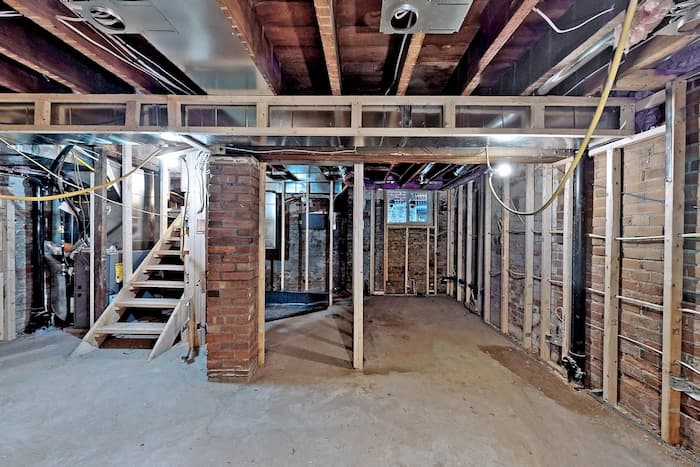
How to Raise a Basement Ceiling?
The main ways to bring the ceiling into compliance with OBC requirements are backfilling (lowering basement floor options) or raising the ceiling. If you want a legal apartment with a standard height room in the basement, you can’t do without these steps, even though they cost a lot of money.
A professional opinion on the condition of the basement and house support structure should be obtained in order to select the сustom basement height solutions that will preserve and strengthen the existing structure. It is not acceptable to proceed without this step or you will risk the integrity of your entire home.
Method 1: Basement Underpinning
This is the approach that is most usually applied to construct a higher basement ceiling height and increase living space. Under the current foundation, a new one must be installed for this project. Lower the basement takes time because it is a labour-intensive procedure.
Underpinning basement foundation in a step-by-step manner, more support will be added as the development progresses. As you might expect given how complicated the process is, it’s also the more pricey choice. Your ceiling will effectively be raised through existing basement foundation excavation.
Method 2: Basement Bench Footing Method
Here, a bench or sill is built around the perimeter of the sidewalls to maintain the base’s fundamental stability. The whole flooring is then separated and dropped as opposed to only the flooring from the inside of the framing. A benched basement is a less expensive choice.
The underground work area is reduced with the bench footing basement technique, which is the only downside. Many individuals are making this attempt to match the ledge’s design to the room’s decor and furniture.
Method 3: Raise Your Basement Ceiling by Raising Beams
If an expansive basement with a beam that runs through the center is your dream dungeon, this may be the right way to raise the height of your basement ceiling. Fortunately, there is a solution to lift the entire beam if building partitions is not something you’d like to accomplish.
The floor joists are all butted up against joist hangers as it is raised. This indicates that the endpoints of the beams must have adequate reinforcement. Only when the joists are perched atop a wooden beam can this approach be used.
Method 4: Lifting Your House
The developer will begin lifting the building as soon as they have enough space to do so. The current infrastructure and the favored method of the builder may determine how this goes.
Separate the house from an existing base, it can include elevating the old slabs or placing beams underneath the floor joists. The latter approach is more typical if your basement already exists. If you don’t, either choice can be a possibility.
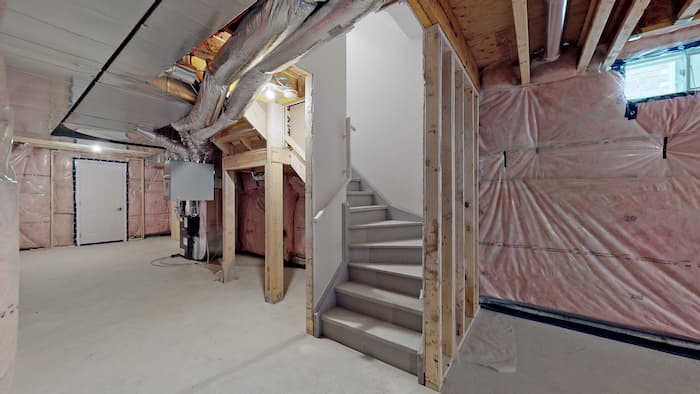
Legal Compliance
The Ontario Building Code (OBC) sets the minimum allowable basement height requirements for legal apartments at 6’8’.
If you want to use your basement for living in it, you must get permission from your local municipality before you start building new footings.
Other opinions and inspections will be required at different stages:
- Inspection of excavation, foundation preparation and inspection of retaining/supporting walls to ensure proper anchorage and to support the integrity of the structure.
- Inspection during the works phase: before pouring new foundations, erecting basement walls, the inspector will check depth, reinforcement and stability.
- Plumbing, drainage and waterproofing: when relocating or installing new drains, the inspector checks for proper slope, ventilation and waterproofing.
- Electrical and HVAC: if electrical wiring is changed, an ESA (Electrical Safety Authority) inspection is required, as well as an HVAC inspection.
- Final structural and occupancy inspection: to ensure that all work is completed in accordance with the approved plans and is safe.
Specific codes and requirements should be verified with the local municipality. Failure to comply can result in fines, rework or revocation of the permit.
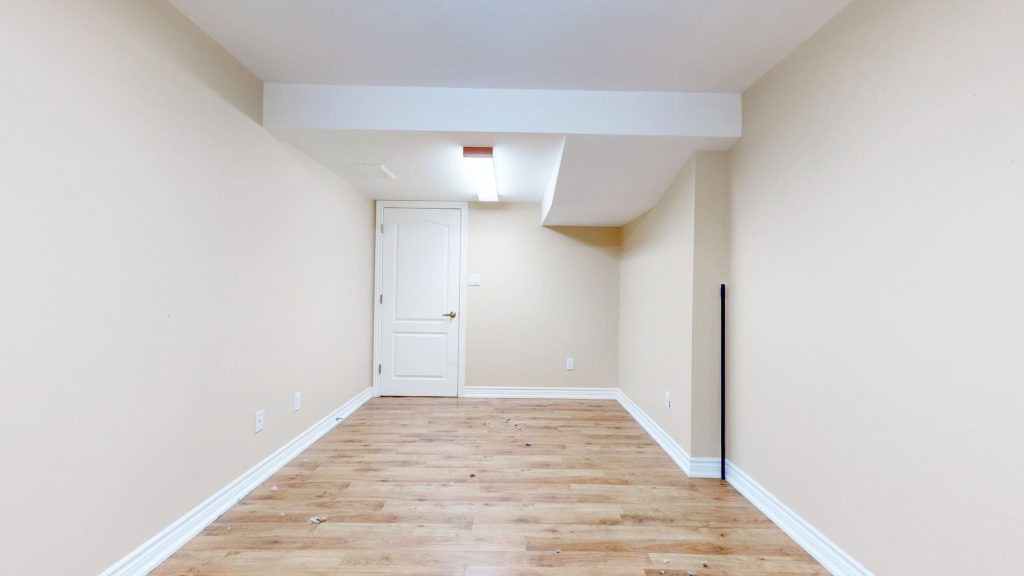
How Will Raising a Basement Ceiling Affect Your House?
Before undertaking the massive effort of elevating your existing basement ceiling, think about your needs and how you want to use the space. If you want to utilize the space as a recreation or family room, it is not necessary to add extra height.
The real estate industry in Ontario views homes with greater basements as being more valuable. It might also make more natural light accessible. These are just a few instances that affect the house when you raise the ceiling height.
To gain just a few extra inches of space, you can employ a variety of strategies and design guidance in basement renovation that’s going to save you both time and cash.
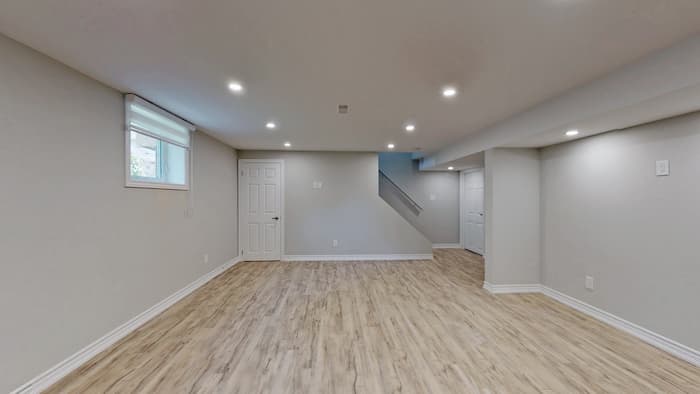
How Much Does It Cost to Raise a Basement Ceiling?
Our basement underpinning service costs from 85$ to 450$ per sqft. Due to the length of time required to remove the old flooring, excavate the basement, and lay a new structure, excavating projects often have higher labor expenses.
Which Option Is Best for You?
Here are a few factors to take into account as you decide to increase the headroom by underpinning or benching or otherwise lowering your basement.
- How long do you plan to stay in this house – Are you planning to stay here for a while or are you planning on selling it within the next couple of years? Choose underpinning in the first case. Decide which of the other options to use for the latter.
- Your budget – Regardless of the undertaking, renovations can be expensive. Benching can be the greatest option when you’re looking for something affordable but still need the most available.
- How you intend to utilize the basement – When you need as much area as possible, benching might not be a good option. In this manner, the sq ft is decreased. With the benches, though, you might be inventive.
Adding Height to Your Basement: Tips and Tricks
Without altering the structure of the basement space, you could indeed end up making the ceiling appear high. A low roof height can be raised with stuff as easy as rearrangement of the basement installations. Here are a few techniques for making a low ceiling appear higher without basement renovation:
- Use paint – This is done to give the illusion of a larger area by selecting brighter hues for the wall surfaces and ceilings. To lighten up the basement, choose white or pastel hues. To produce the appearance of reflection, use high-gloss paint.
- Get rid of any ceiling decorations – If you have lighting on the ceiling, take them down. Rather, you could have used some ground or desk lighting fixtures. Apply the same procedure to every mounted ceiling fan.
- Keep the furniture count low – Some people opt to do this to conserve space and add height in a low-ceilinged basement.
- Add tall mirrors – mirrors reflect light, which heightens the appearance of the ceiling.
- Showcase the authentic industrial feel – To accomplish this, leave the interconnections on the ceiling uncovered. If not, you might incorporate some decor to hide the cables or tubes on the top.
Why Choose CSG Renovation?
CSG Renovation has been around for more than a decade of basement renovation experience in Ontario and provides professional basement elevation services. With their qualified technicians, high-quality finishes are expected in every basement underpinning project. If you do not want to stress yourself out on renovating by yourself, this is the company you should rely on for low ceiling basement renovation.
Just contact us to hire basement foundation team and get free basement lowering cost estimate. Basement ceiling raising consultation is also available by calling (647) 428-0007.






